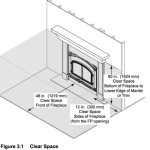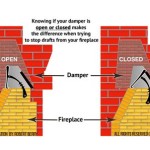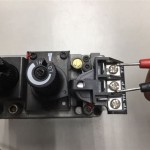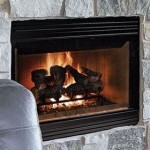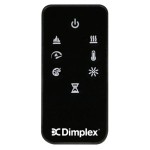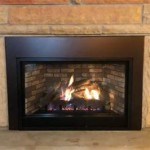Lp Gas Fireplace Inserts: A Comprehensive Guide
Liquified petroleum (LP) gas fireplace inserts offer a convenient and efficient alternative to traditional wood-burning fireplaces. These inserts, designed to fit within existing fireplace openings, provide the ambiance of a real flame without the mess and hassle associated with firewood. They represent a significant upgrade in terms of heating efficiency, ease of use, and environmental impact. This article delves into the various aspects of LP gas fireplace inserts, focusing on their benefits, considerations for installation, types, features, and maintenance requirements.
Traditional wood-burning fireplaces, while aesthetically pleasing, are notoriously inefficient heating sources. A significant portion of the heat generated escapes through the chimney, often resulting in a net loss of heat in the home. LP gas fireplace inserts address this issue by providing a closed combustion system that maximizes heat retention and minimizes heat loss. The controlled burning process of LP gas also reduces emissions and contributes to improved indoor air quality. Furthermore, the convenience of operating an LP gas fireplace insert – often with a simple button or remote control – makes it an attractive option for homeowners seeking a low-maintenance heating solution.
Advantages of LP Gas Fireplace Inserts
The advantages of choosing an LP gas fireplace insert over other heating options, including wood-burning fireplaces, electric fireplaces, and even other types of gas heating systems, are numerous and compelling. These advantages stem from the insert's design, fuel source, and operational characteristics.
Efficiency and Cost Savings: LP gas fireplace inserts are significantly more efficient than traditional wood-burning fireplaces. Their closed combustion system ensures that more heat is radiated into the room rather than escaping up the chimney. This increased efficiency translates into lower heating costs, especially when compared to the continuous expense of purchasing and storing firewood. The cost of LP gas can fluctuate, but generally, it offers a competitive price point compared to other heating fuels, particularly when factoring in the convenience and reduced labor associated with its use. Many models also include features like programmable thermostats and adjustable flame heights, allowing users to further optimize energy consumption and minimize fuel costs.
Convenience and Ease of Use: The convenience of an LP gas fireplace insert is a major draw for many homeowners. Unlike wood-burning fireplaces, there is no need for chopping, stacking, or storing firewood. Lighting the fire is as simple as pressing a button or using a remote control. Many models come with automatic ignition systems, eliminating the need for matches or lighters. The flame height can be easily adjusted to control the heat output, and some models even offer programmable thermostats to maintain a consistent temperature. Cleanup is also a breeze, as there is no ash or soot to remove. This ease of use makes LP gas fireplace inserts an ideal heating solution for individuals with mobility issues or those who simply prefer a low-maintenance option.
Environmental Friendliness: LP gas is a relatively clean-burning fuel compared to wood. It produces significantly fewer emissions, including particulate matter and carbon monoxide. The closed combustion system of an LP gas fireplace insert further minimizes emissions and improves indoor air quality. While LP gas is a fossil fuel, its lower carbon footprint compared to wood and other fossil fuels makes it a more environmentally responsible choice. Furthermore, some manufacturers are developing LP gas inserts that are compatible with renewable energy sources, such as solar power, further reducing their environmental impact.
Aesthetic Appeal: LP gas fireplace inserts offer a wide range of aesthetic options to complement any home décor. They are available in various styles, from traditional to contemporary, and can be customized with different log sets, fire glass, and decorative surrounds. The realistic flame patterns mimic the look of a real wood fire, creating a warm and inviting ambiance. Some models even feature glowing embers and adjustable lighting to enhance the visual appeal. The versatility of LP gas fireplace inserts allows homeowners to create a fireplace that reflects their personal style and preferences.
Installation Considerations for LP Gas Fireplace Inserts
Proper installation is crucial for the safe and efficient operation of an LP gas fireplace insert. It is highly recommended that installation be performed by a qualified and licensed professional who is experienced in working with gas appliances. Several factors must be considered during the installation process to ensure compliance with local building codes and manufacturer's specifications.
Venting Requirements: One of the most important considerations is the venting system. LP gas fireplace inserts require a proper venting system to safely exhaust combustion gases to the outside. There are two primary types of venting systems: direct vent and B-vent. Direct vent systems draw air from outside the home for combustion and vent exhaust gases directly outside through a sealed vent. This type of system is highly efficient and minimizes the risk of backdrafting. B-vent systems use existing chimneys to vent exhaust gases, but they require careful inspection to ensure that the chimney is in good condition and properly sized for the insert. The venting system must be installed according to the manufacturer's instructions and local building codes. Improper venting can lead to dangerous carbon monoxide buildup.
Gas Line Connections: Connecting the LP gas fireplace insert to the gas line requires careful attention to detail. A gas line must be run from the LP gas tank to the fireplace. The gas line must be properly sized to ensure adequate fuel supply to the insert. All connections must be made with approved fittings and tested for leaks. Local building codes typically require a shut-off valve to be installed near the fireplace insert for safety. It is imperative that a qualified professional performs the gas line connections to prevent leaks and ensure safe operation.
Fireplace Opening and Surround: The existing fireplace opening must be properly prepared to accommodate the LP gas fireplace insert. The opening must be cleaned and inspected for any structural damage. The insert must fit snugly within the opening, and any gaps must be sealed to prevent heat loss. A decorative surround can be installed around the insert to enhance its aesthetic appeal and conceal any minor imperfections. The surround must be made of non-combustible materials and installed according to the manufacturer's instructions.
Permits and Inspections: Most jurisdictions require permits for the installation of LP gas fireplace inserts. It is the homeowner's responsibility to obtain the necessary permits and schedule inspections. Inspections are typically performed by local building inspectors to ensure that the installation meets all applicable codes and safety standards. Failing to obtain permits and inspections can result in fines and delays.
Types and Features of LP Gas Fireplace Inserts
LP gas fireplace inserts are available in a variety of types and configurations to suit different needs and preferences. Understanding the different types and features can help homeowners make an informed decision when selecting an insert for their home.
Direct Vent vs. Vent-Free: As mentioned previously, direct vent inserts draw air from outside the home for combustion and vent exhaust gases directly outside through a sealed vent. Vent-free inserts, on the other hand, do not require a vent. They burn very efficiently and produce minimal emissions, making them suitable for homes where venting is not possible or practical. However, vent-free inserts are subject to stricter regulations and may not be permitted in some jurisdictions due to concerns about indoor air quality. Direct vent inserts are generally considered to be the safer and more efficient option.
BTU Rating and Heating Capacity: The BTU (British Thermal Unit) rating of an LP gas fireplace insert indicates its heating capacity. A higher BTU rating means that the insert can generate more heat. The appropriate BTU rating for a particular home depends on the size of the room being heated and the insulation levels. A properly sized insert will efficiently heat the room without overheating or consuming excessive fuel. Consulting with a heating professional can help determine the appropriate BTU rating for your needs.
Log Sets and Flame Appearance: LP gas fireplace inserts come with a variety of log sets and flame appearance options. Log sets are typically made of ceramic or refractory materials and are designed to mimic the look of real wood logs. Some log sets are more realistic than others, and the choice depends on personal preference. The flame appearance can also vary, with some inserts producing tall, flickering flames and others producing more subtle, glowing flames. The flame appearance can often be adjusted to suit different moods and preferences.
Remote Controls and Thermostats: Many LP gas fireplace inserts come with remote controls and thermostats for added convenience. Remote controls allow users to turn the insert on and off, adjust the flame height, and control the temperature from a distance. Thermostats allow users to set a desired temperature and maintain a consistent level of comfort. Some models even offer programmable thermostats that can be set to automatically adjust the temperature at different times of the day.
Safety Features: Safety is a paramount concern when dealing with gas appliances. LP gas fireplace inserts are equipped with various safety features to prevent accidents. These features may include automatic shut-off valves, flame sensors, and carbon monoxide detectors. It is important to ensure that the insert is properly installed and maintained to ensure that these safety features function correctly.
Maintenance of LP Gas Fireplace Inserts
Regular maintenance is essential for the safe and efficient operation of an LP gas fireplace insert. Proper maintenance can extend the lifespan of the insert and prevent costly repairs. It is recommended that homeowners perform routine maintenance tasks themselves and schedule professional servicing at least once a year.
Cleaning and Inspection: The exterior of the LP gas fireplace insert should be cleaned regularly with a soft cloth. Dust and debris can accumulate on the surface and affect its appearance. The glass door should be cleaned with a glass cleaner specifically designed for fireplaces. The log set should be inspected for any signs of damage or deterioration. Loose logs should be repositioned to ensure proper flame appearance. The venting system should be visually inspected for any signs of blockage or damage.
Pilot Light Maintenance: The pilot light should be inspected regularly to ensure that it is burning properly. A weak or flickering pilot light may indicate a problem with the gas supply or the pilot light assembly. If the pilot light goes out frequently, it may be necessary to clean the pilot light orifice or adjust the gas pressure. Consult the manufacturer's instructions for specific guidance on pilot light maintenance.
Professional Servicing: A qualified professional should service the LP gas fireplace insert at least once a year. Professional servicing typically includes a thorough inspection of all components, including the gas valves, burners, venting system, and safety features. The professional will also clean the burners, check the gas pressure, and test the safety features. Professional servicing can identify potential problems before they become serious and ensure that the insert is operating safely and efficiently.
Carbon Monoxide Detection: Carbon monoxide is a colorless, odorless gas that can be deadly. It is essential to install carbon monoxide detectors in your home, especially near fireplaces and other fuel-burning appliances. Test the carbon monoxide detectors regularly to ensure that they are functioning properly. If you suspect a carbon monoxide leak, evacuate the home immediately and call the fire department.

Best Gas Fireplace Inserts Fireplaces Direct Learning Center

Gas Fireplace Insert Propane Regency Vermont Castings Napoleon

Chaska 335s Gas Fireplace Insert Fireplaces

Gas Fireplace Insert Propane Regency Vermont Castings Napoleon

Idv26lpe2 Marquis Capella 26 Lp Gas Fireplace Insert Ipi Big George S Home Appliance Mart

Best Gas Fireplace Inserts Fireplaces Direct Learning Center

Chaska 25 Gas Fireplace Insert With Remote Small Log

Gas Fireplace Inserts Napoleon Fireplaces

10 Unique Propane Natural Gas Fireplace Inserts Insert Indoor

Heat Glo Escape Gas Insert Fireside Hearth Home
Related Posts

